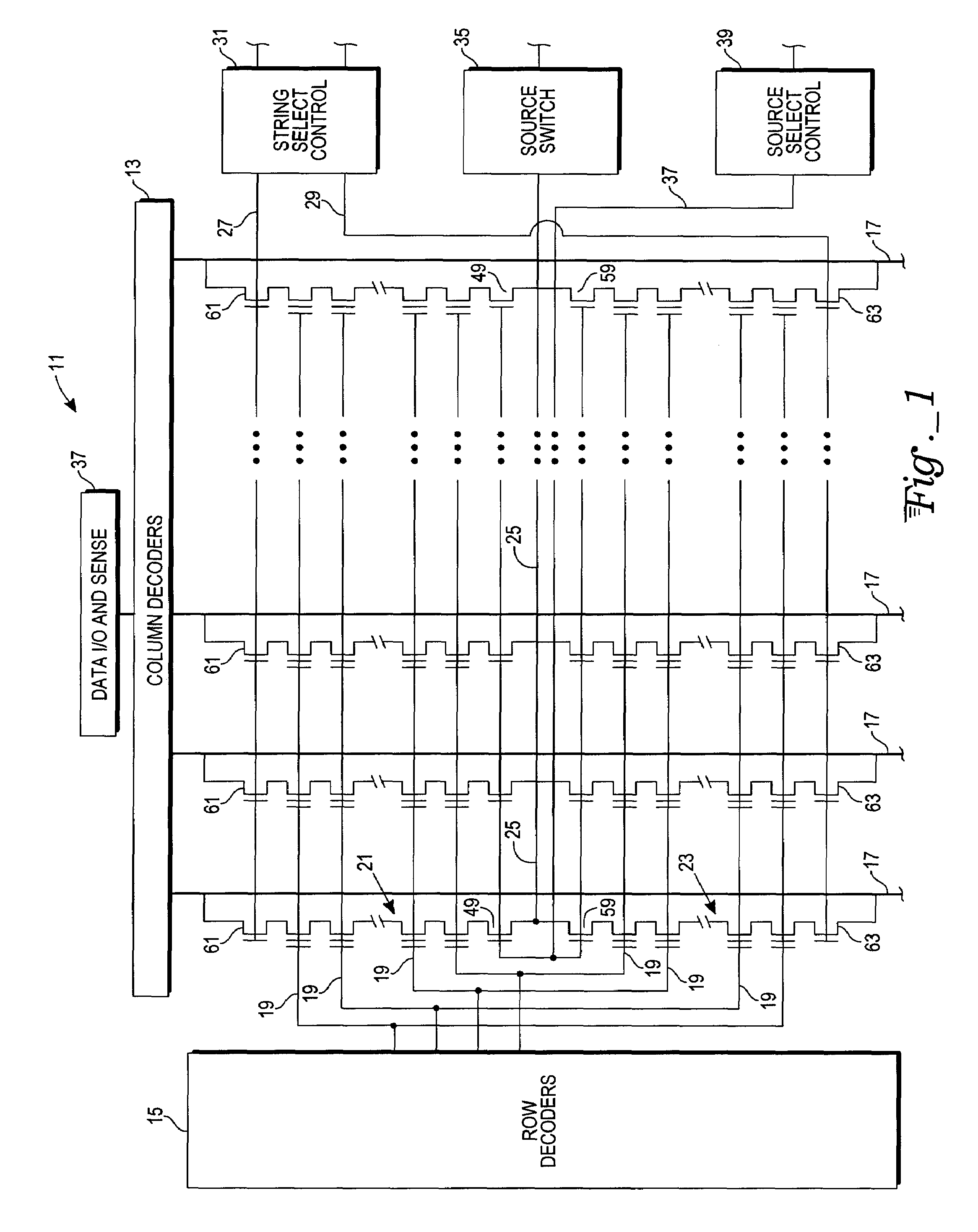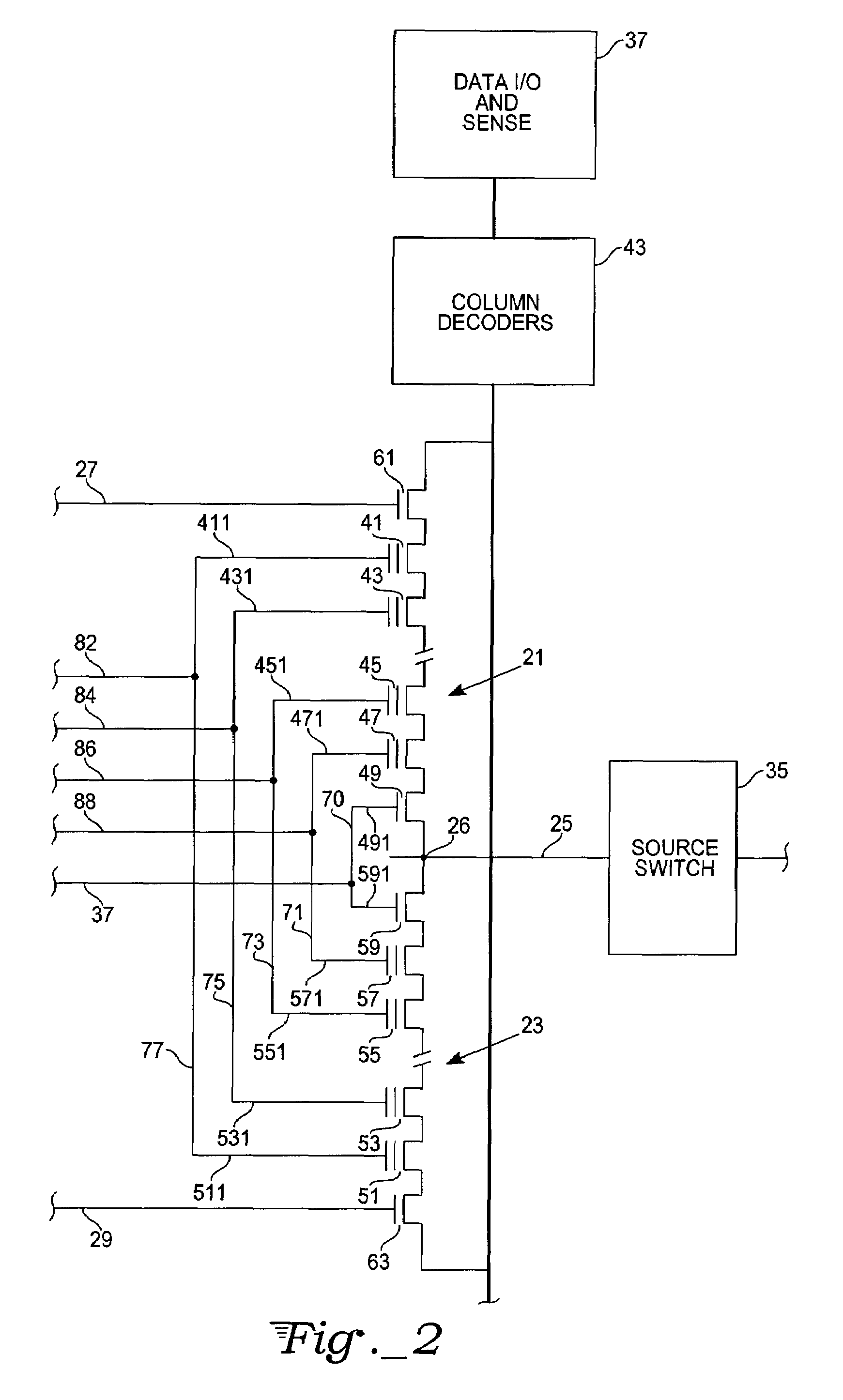Non-volatile memory array architecture with joined word lines
a memory array and non-volatile technology, applied in the field of semiconductor memories, can solve the problems of slow memory array access time due to word line resistance, inability to make metal straps the same width as ultra narrow word lines, and difficulty in locating metal straps for small geometry memory arrays with narrow width word lines. , to achieve the effect of lowering resistance, increasing width, and speeding up word line speed
- Summary
- Abstract
- Description
- Claims
- Application Information
AI Technical Summary
Benefits of technology
Problems solved by technology
Method used
Image
Examples
Embodiment Construction
[0019]With reference to FIG. 1, a portion of a non-volatile NAND memory array 11 has column decoders 13 and row decoders 15. The array portion 11 is a left portion of a symmetric memory array having a mirror image right portion described below with reference to FIG. 8. The mirror image portion may share the same column and row decoders. The memory array portion 11 has bit lines 17 associated with the column decoders and with select transistors 61 and 63 for each string of the non-volatile array. Since the memory array 11 is a NAND array, the source of one memory cell is connected to the drain of an adjacent cell in a cascaded string arrangement where each string has a number of transistors representing one byte. In the exemplary embodiment of FIG. 1, two strings connected together hold two strings of data. More than two strings could be cascaded. A first string 21 in the non-volatile array is in cascade relationship with the second string 23 with the source line 25 running between t...
PUM
| Property | Measurement | Unit |
|---|---|---|
| program voltage | aaaaa | aaaaa |
| feature size width | aaaaa | aaaaa |
| width | aaaaa | aaaaa |
Abstract
Description
Claims
Application Information
 Login to View More
Login to View More - R&D
- Intellectual Property
- Life Sciences
- Materials
- Tech Scout
- Unparalleled Data Quality
- Higher Quality Content
- 60% Fewer Hallucinations
Browse by: Latest US Patents, China's latest patents, Technical Efficacy Thesaurus, Application Domain, Technology Topic, Popular Technical Reports.
© 2025 PatSnap. All rights reserved.Legal|Privacy policy|Modern Slavery Act Transparency Statement|Sitemap|About US| Contact US: help@patsnap.com



